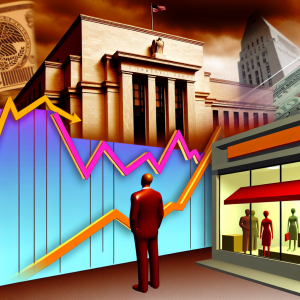Retail Trade Faces Headwinds While E-Commerce and Food Services Shine: What Investors Must Know Now
The latest retail sales data for May paints a nuanced picture that investors can’t afford to overlook. Overall retail trade dipped 0.9%, signaling cracks in consumer spending that have broad implications for the economy and markets. Yet, beneath this headline weakness lie pockets of resilience—nonstore retailers, largely e-commerce, surged 8.3% year-over-year, while food services and drinking places grew 5.3%. This divergence highlights a critical trend: consumers continue to prioritize convenience and experiential spending even as traditional retail falters.
Why This Matters for Investors
The decline in total and core retail sales is more than just a monthly blip; it raises red flags about the sustainability of consumer demand heading into the crucial summer months. Consumer spending accounts for roughly 70% of U.S. GDP, so any sustained cooling here could ripple across sectors and asset classes. The contrasting strength in e-commerce and food services points to a structural shift in consumer behavior—one that savvy investors should capitalize on by overweighting digital-first and experiential businesses while reducing exposure to struggling brick-and-mortar retailers.
Fed Policy Under the Microscope
This report lands just as the Federal Reserve kicks off its two-day policy meeting. With markets nearly certain the Fed will hold interest rates steady, the focus shifts to the Fed’s forward guidance. The weakness in core retail sales throws a wrench into the Fed’s growth outlook, which has already been tempered by a downward revision of Q1 GDP and projections showing consumer spending slowing from 3.1% to just 1.1% by year-end.
The Atlanta Fed’s GDPNow model currently forecasts a 2.1% contraction in Q2 GDP—a stark signal that the economy may be cooling faster than many expect. If upcoming data revisions confirm this trend, the Fed could adopt a more cautious tone, potentially delaying rate hikes or even hinting at future easing if the slowdown intensifies.
Market Implications and What Investors Should Do
The downside surprise in retail sales reinforces a bearish stance on broad retail and consumer discretionary stocks, especially those tied to physical stores. Expect these sectors to face headwinds as investors recalibrate expectations for consumer demand.
Conversely, nonstore retailers and food service companies remain bright spots and should be considered for selective overweighting. For example, companies like Shopify and DoorDash, which have capitalized on the convenience and experience economy, are positioned to benefit from these evolving consumer preferences.
Advisors and investors should brace for increased volatility across equities, bonds, and currencies as markets digest Fed messaging and adjust to slower consumption growth. Diversification into sectors less sensitive to consumer spending cycles—such as healthcare and utilities—may provide stability amid this uncertainty.
Unique Insight: The Rise of Hybrid Consumer Models
A trend not yet fully appreciated is the rise of hybrid consumer models blending online and offline experiences. Retailers investing in seamless omnichannel strategies—like Walmart’s integration of e-commerce with its vast physical footprint—are likely to outperform peers stuck in traditional models. Investors should look beyond pure-play e-commerce and identify companies innovating in this space, as they stand to capture both convenience-driven and experiential spending.
What’s Next?
Looking ahead, watch for:
- Upcoming retail sales revisions and Q2 GDP updates to confirm the trajectory of consumer spending.
- Fed communications for shifts in policy tone, especially if economic data continues to weaken.
- Earnings reports from retail and consumer discretionary companies for early signals of demand trends.
- Continued growth in nonstore retail and food services as durable themes in portfolio construction.
In summary, the evolving retail landscape demands a nuanced investment approach—one that balances caution on traditional retail with strategic exposure to digital and experiential sectors. Staying ahead means understanding not just what consumers are spending, but how and where they choose to spend.
Sources:
- U.S. Census Bureau Retail Trade Report, May 2024
- Federal Reserve Economic Data (FRED)
- Atlanta Fed GDPNow Model
- MarketWatch analysis on consumer discretionary trends
By taking these insights into account, investors and advisors can better navigate the shifting consumer landscape and position portfolios for resilience and growth in an uncertain economic environment.
Source: Retail Sales, Core Spending Miss in May, Raising Growth Risks Ahead of Fed Decision

